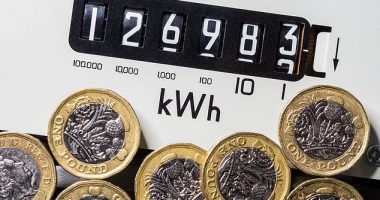HOUSEHOLDS will be hit by a number of tax hikes and changes in April – but applying for these relief schemes now can help you beat them, says tax expert Jim Lee.
Family budgets will be squeezed even tighter next month when National Insurance rises and thousands of Brits will be hit by higher Council Tax bills.
Plus, the income tax threshold has been frozen, which means that by the 2025/26 year, we’ll be paying £8.2billion more a year as a result.
But James Lee Associates tax partner Jim Lee said Brits might not be aware of tax reliefs you can apply for, which could shave up to thousands of pounds off your bill.
Mr Lee has been dealing with taxes for 30 years, and is one of the experts on The Sun’s new Squeeze Team panel, set up to help you through the cost of living crisis.
If you’re worried about making ends meet, are struggling to pay off your debts or don’t know how best to manage your cash, get in touch by emailing [email protected].
Here’s three tax reliefs Mr Lee said you can apply for now to help ease the squeeze.
Get the working from home tax relief
You can claim for a working from home tax relief worth up to £125 – even if you’ve just worked one day from home.
“If you are employed by a company, you can apply for the reduction,” Mr Lee said.
If you are a basic rate tax payer, the relief is worth 20% – that means that you’ll get £1.20 per week.
This adds up to £62.40 over a year for anyone earning between £12,500 and £50,000.
For higher rate tax payers, your relief will be worth 40% or £2.40 per week.
This adds up to £124.80 for the year for anyone who earns more than £50,000 per year.
“However, be aware that the scheme may end soon,” Mr Lee said.
“There are reports that the government is reviewing whether to close the scheme.”
That’s because £500million has been dished out in help over the course of the pandemic, according to The Telegraph – far above the £2million a year the scheme was costing before the crisis.
HMRC has an online tool to help you submit a claim.
You can claim for last year too (the tax year runs from April to April) – so make sure you apply for it before the new tax year starts to avoid missing out on the relief.
Apply for marriage allowance
As many as 2.4million couples who have tied the knot are missing out on up £1,220 in tax relief.
That’s because they have not claimed marriage allowance, which lets married couples and those in civil partnerships share their personal tax allowances.
This can slash hundreds of pounds off your yearly tax bill, Mr Lee said.
You can transfer up to a maximum of £1,260 in unused allowance, which would mean saving £252 off your income tax bill this year.
But you are also allowed to backdate your claim for up to four years – as long as you met the criteria.
This would net you an extra £970 in tax savings bringing the total amount you’ve got back up to £1,220.
You’ll be eligible for the help if one person in the couple is a basic rate taxpayer, and the other a non-taxpayer.
That means non-taxpayer must have earned an income below their Personal Allowance threshold of £12,570 this year.
The higher earner must earn less than £50,270 in England or £43,662 in Scotland to qualify as a basic rate payer.
“HMRC won’t give it to you automatically – you need to complete a tax return, or ask HMRC for a form to fill out,” Mr Lee said.
Only the lower fee payer or non-taxpayer can apply, and the easiest way is to fill out a form on the government’s website.
Open an ISA
Saving cash might not be possible for many families while a cost of living crisis is squeezing budgets.
But if you do have some spare, instead of leaving any spare cash in your current account, savers might want to consider an ISA.
“The income and the gains you make on ISAs are tax free,” Mr Lee said.
Each tax year, everyone over the age of 16 in the UK gets an ISA allowance, which lets them save money tax-free.
The maximum amount you can put away for the 2020/21 tax year is £20,000, unless it is a junior ISA, in which case you can save up to £9,000 a year.
There are different types of ISAs you can put your money into.
These include:
- A cash ISA – works the same way a savings account does, but you don’t pay tax on interest you earn and you get a fixed rate of return
- A stocks and shares ISA – invests in the stock market which could lead to bigger returns, but there’s a risk you could lose money
- A lifetime ISA – anyone between the ages of 18 and 40 can open to save for buying a first home or for their retirement
- A junior ISA – for under 18s where you can save up £9,000 a year
Another Squeeze Team expert shares how to get thousands of pounds for FREE to boost your savings.


Here’s how you can retire at 55, according to one pensions expert.
Take our money MOT and save yourself up to hundreds of pounds on your bills.
We pay for your stories!
Do you have a story for The Sun Online Money team?












